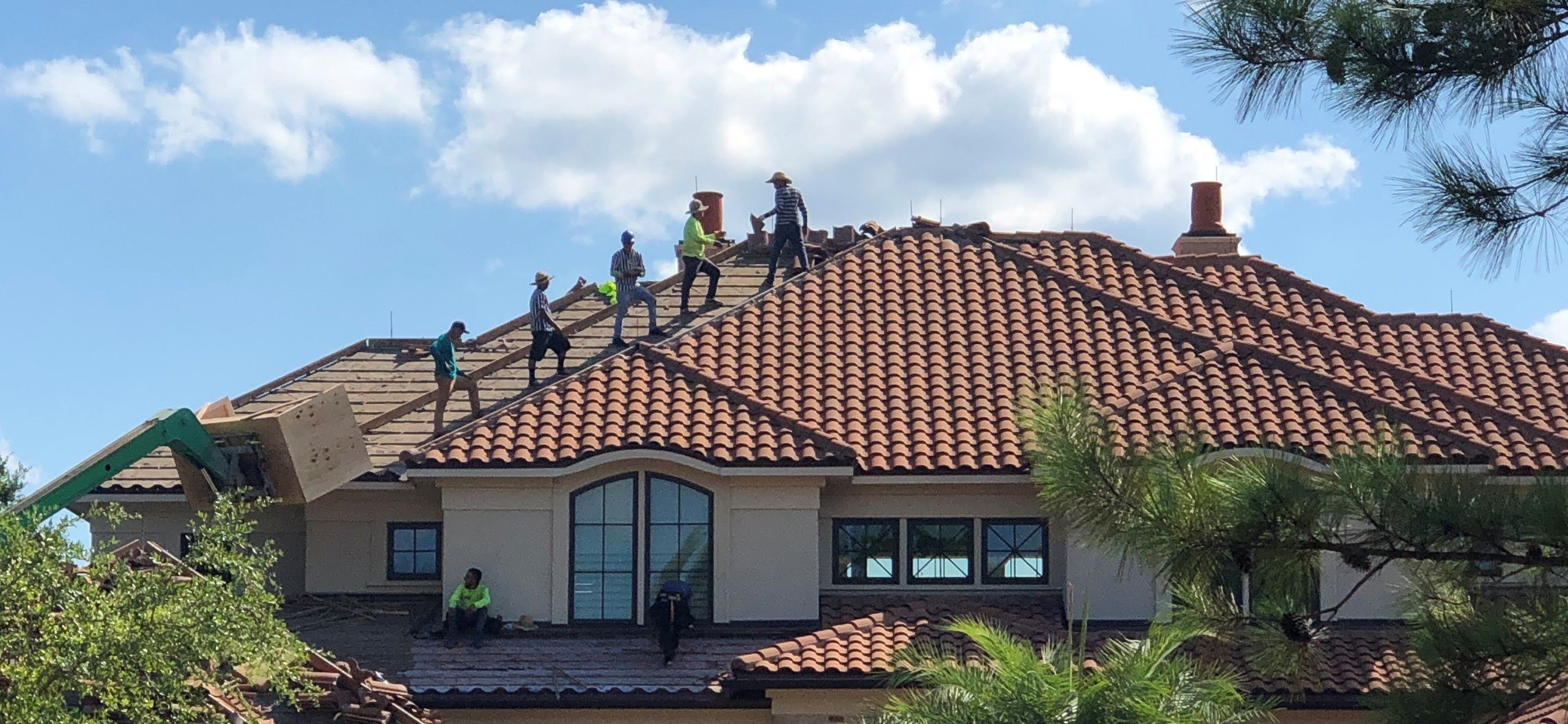The Importance of Picking Experienced Roofing Companies Gainesville Florida
Best Practices for Ensuring Appropriate Roofing Ventilation
A balanced consumption and exhaust air vent ratio, generally 1:300, plays a crucial duty, with consumption vents preferably placed at the reduced side of the roof for amazing air access and exhaust vents at the top for warm air departure. Maintaining insulation away from vents is critical to stop airflow limitation.
Understand Air Flow Essentials
Effectively recognizing ventilation fundamentals is vital for guaranteeing the long life and effectiveness of roof systems. Reliable air flow mitigates wetness buildup and temperature level extremes in the attic, both of which can bring about significant structural damages over time. A well-ventilated roof helps in preventing common issues such as mold and mildew growth, wood rot, and ice dams, which can jeopardize the stability of the roof materials and the underlying frameworks.
The primary objective of ventilation is to assist in the movement of air, allowing for a regular exchange between the exterior and indoor environments. This balance is attained via a mix of consumption and exhaust vents that collaborate to preserve optimal airflow. Consumption vents, normally located along the eaves or soffits, enable fresh air to get in the attic room, while exhaust vents, commonly located at or near the roofing ridge, allow warm, damp air to escape.
Secret aspects influencing the performance of roof covering ventilation consist of correct placement, appropriate sizing, and guaranteeing that both intake and exhaust vents are unhampered. Regular assessment and upkeep are important to recognize possible blockages, damage, or ineffectiveness in the ventilation system, thus securing the roof's performance and longevity.
Kinds of Roof Vents
Roof vents play a vital role in preserving reliable attic room air flow and, by expansion, the overall health and wellness of the roof system. Numerous kinds of roof covering vents are readily available, each with distinct advantages tailored to certain roof covering needs.

Soffit vents are installed under the eaves and operate in tandem with roofing vents to ensure a well balanced intake and exhaust system. By permitting cooler air to get in from below, soffit vents help with the expulsion of warm air via upper vents. Gable vents, situated on the outside wall surfaces of the attic room, deal one more reliable solution, specifically in homes with gable roofing systems.
Evaluate Your Existing Air Flow

Following, think about the age and condition of your roofing materials and ventilation elements. Older systems might not follow present structure codes or may have worn away over time, decreasing their efficiency. Conduct a comprehensive evaluation to recognize any indicators of deterioration, such as corrosion, damage, or voids that can endanger the system's performance.
Furthermore, gauge the attic temperature and moisture levels. High temperatures and moisture can indicate poor ventilation - roofing companies. Make use of a hygrometer and thermometer to get exact readings, comparing them with outdoor conditions. Consistent discrepancies recommend possible concerns that require addressing.
Setup Best Practices
Efficient important source setup of roof covering air flow systems is extremely important for guaranteeing ideal efficiency and longevity. Appropriate installation starts with comprehending the certain ventilation demands of the roof and the building it covers. This includes computing the correct proportion of consumption to wear down vents, generally sticking to the 1:300 rule, which states one square foot of air flow for every 300 square feet of attic room floor space.

The positioning of vents is similarly vital. Consumption vents ought to be set up at the roofing's reduced edge, often in the soffits, to allow amazing air to get in. Exhaust vents, on the other hand, need to be mounted near or at the roofing system's peak to help with the leave of warm, moist air. This creates an all-natural air movement that assists maintain temperature level and dampness equilibrium within the attic room room.
Seal all vent connections carefully to stop air leakages and potential water seepage. Usage high-quality materials and comply with supplier guidelines to ensure toughness and effectiveness. browse around this web-site In addition, incorporating ridge vents with baffles can substantially enhance air flow efficiency by stopping wind-driven rainfall and snow from getting in the attic room.
Ultimately, precise installation of roof covering air flow systems minimizes potential problems such as mold and mildew development, ice dams, and architectural damages, making sure the roofing's stability and the structure's overall health.
Routine Upkeep Tips
Consistency in maintenance techniques is fundamental to making certain the lasting effectiveness of roofing air flow systems. Throughout these evaluations, make certain that vents are complimentary of debris, nests, and other blockages that might hamper air movement.
Cleansing the vents is another crucial job. Use a soft brush or a vacuum to get rid of dirt and particles from consumption and exhaust vents. Be mindful not to damage the air vent displays or louvers throughout the process. Additionally, check the attic space for any kind of indications of water damage, which could jeopardize the honesty of the roof.
Proper insulation is similarly important. Make sure that attic insulation go to my blog does not obstruct the vents, as this can seriously limit air flow. Rearrange or replace it to keep an effective barrier. if any type of insulation has moved or cleared up.
Last but not least, replace any kind of damaged or missing components without delay. Broken vents, split shingles, or deteriorated blinking can all contribute to poor air flow and must be attended to without delay. Routine maintenance makes sure that the roof ventilation system works ideally, thereby prolonging the life-span of the roofing itself.
Verdict
Guaranteeing correct roof covering ventilation is paramount for keeping the performance and durability of a roof. Adherence to the 1:300 intake and exhaust air vent ratio, combined with the strategic positioning of vents, is vital. Routine biannual evaluations, particles cleaning, and making certain insulation does not obstruct airflow are essential methods. Applying these ideal practices will certainly promote a well-ventilated roof system, consequently mitigating potential problems connected to moisture buildup and extreme warm, ultimately extending the roofing system's life-span.
A balanced consumption and exhaust vent proportion, commonly 1:300, plays a crucial function, with consumption vents ideally put at the lower side of the roofing system for cool air entrance and exhaust vents at the top for warm air departure. Consumption vents, commonly located along the soffits or eaves, allow fresh air to enter the attic area, while exhaust vents, often located at or near the roofing ridge, make it possible for warm, moist air to escape.
Soffit vents are installed under the eaves and job in tandem with roof vents to guarantee a well balanced intake and exhaust system. By allowing cooler air to go into from below, soffit vents help with the expulsion of hot air via top vents. Adherence to the 1:300 intake and exhaust vent proportion, paired with the tactical placement of vents, is important.